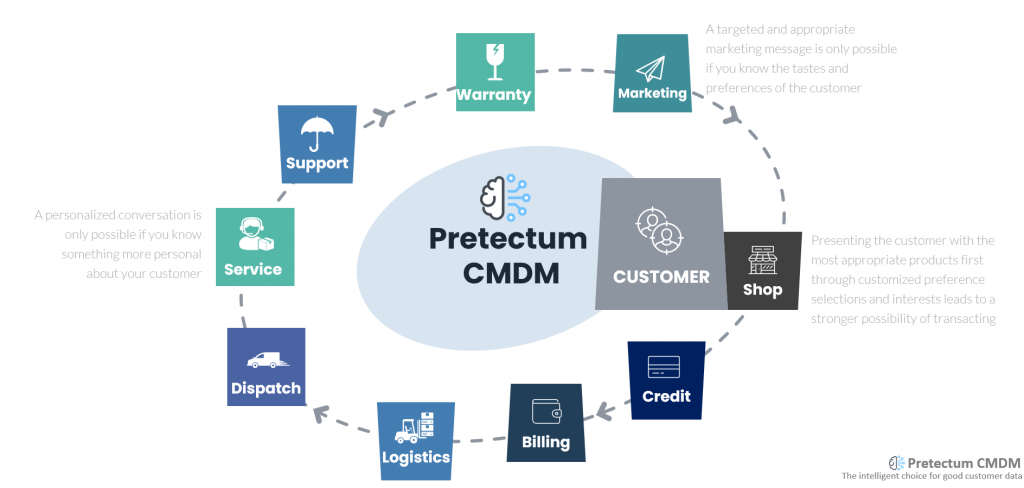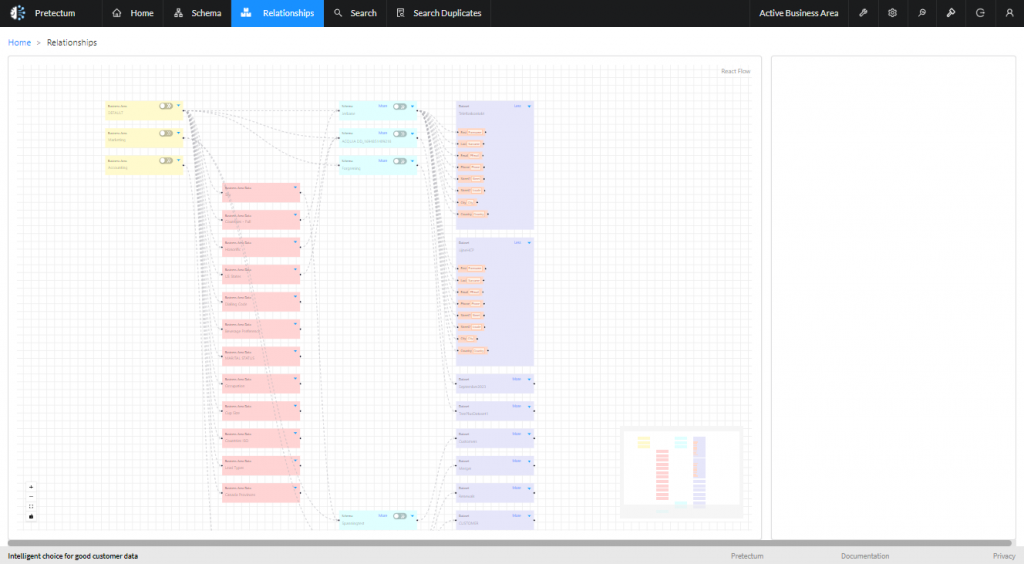Data Mesh seems to be all the rage in data governance circles and although it is a relatively new concept in data architecture it aims to address the challenges of managing and scaling data in large organizations.
The concept was coined by Zhamak Dehghani, a principal consultant at ThoughtWorks, In Dehghani’s concept, Data Mesh proposes a decentralized approach to managing data at scale, making it more accessible and manageable for different teams within an organization.
Data Mesh might be considered groundbreaking because it decentralizes data management, empowering individual domain teams to own and operate their data as data products.
By distributing responsibility, it enhances scalability, agility, and collaboration. This approach optimizes resource utilization, improves data quality, fosters innovation, and ensures compliance, addressing the challenges of modern data operations and enabling organizations to harness the full potential of their data in a rapidly evolving digital landscape.

Traditionally, in many organizations, data is treated as a centralized, monolithic entity. Data engineers and data teams build large, centralized data lakes or data warehouses to store all the data. However, this approach can lead to bottlenecks, where a central team has to manage and process data requests from various parts of the organization. This centralized approach may be inefficient and difficult to scale as the volume and complexity of data increase.
Now, some of us might be thinking, sounds just like decentralized data management – right? Nothing new here, let’s move on. This idea would sell the real power of Data Mesh short though.
Both decentralized data management and Data Mesh involve distributing data-related tasks across different teams, the key distinction lies in the approach and principles employed.
Decentralized data management, in a general sense, implies distributing tasks without specifying a structured methodology. It might lack clear guidelines on ownership, interfaces, or data product-oriented thinking.
In contrast, Data Mesh provides a specific set of principles and practices that guide how data should be decentralized. It introduces a well-defined framework, emphasizing domain-oriented ownership, treating data as a product, and implementing self-serve infrastructure, among other principles.

These specific guidelines ensure that data is not just spread out across teams but is also managed cohesively, ensuring accessibility, quality, and innovation. So, while both concepts involve decentralization, Data Mesh offers a more structured and systematic approach to achieve more effective decentralized data management within organizations.
Data Mesh is not a technology in itself; though you will find “Data Mesh” vendors in the market. Rather, it’s a conceptual framework and set of principles for managing and scaling data within organizations. Data Mesh provides guidelines on how to structure data teams, processes, and architecture, emphasizing concepts like domain-oriented ownership, data as a product, and self-serve infrastructure.
Organizations implementing the concept of a Data Mesh typically use a variety of existing technologies to enable the principles outlined in the framework. These technologies can include data lakes, data warehouses, data cataloging tools, ETL (Extract, Transform, Load) processes, microservices architectures, and various data processing and analysis tools. The choice of specific technologies depends on the organization’s needs, existing infrastructure, and the preferences of individual teams within the organization.
Your Pretectum CMDM can play a crucial role in supporting the Data Mesh concept in various ways. It does this by ensuring consistent and accurate customer data across various domains within your organization along with disciplined ways to collect and manage the customer data.
The Pretectum CMDM centralizes customer data from different sources, ensuring consistency and eliminating duplicates. In a Data Mesh model, where different domain teams and business areas manage their data, having a consistent customer view is vital. The CMDM maintains a single, accurate version of customer data, promoting uniformity across domains.

Pretectum helps you to enforce data quality standards and governance policies. Your teams are able to validate, cleanse, and enrich customer data, ensuring that all the data domains within the Data Mesh adhere to the same quality standards. This consistency is essential in a decentralized environment, preventing data discrepancies and ensuring reliable insights.
Pretectum facilitates collaboration between domains. When different teams within the Data Mesh need to share customer-related data, the centralized CMDM system ensures they are using the same standardized data, fostering seamless collaboration and reducing miscommunication.
CMDM systems are designed to handle large volumes of data efficiently. In a Data Mesh setup where data volumes can be substantial, having a robust system like the Pretectum CMDM ensures scalability and optimal performance, supporting the decentralized processing needs of various business areas.
The customer MDM comes with built-in security and compliance features. Ensuring that customer data is handled securely and compliantly is critical. The Pretectum CMDM systems help enforce access controls, data encryption, and compliance with regulations, which is particularly important when multiple domain teams are involved in data processing.

The Pretectum CMDM can adapt to your evolving business needs. As your organization and its Data Mesh strategy grow, the CMDM can accommodate changes in data structures, relationships, and business rules. This flexibility is valuable when different domains within the Data Mesh need to modify your data requirements over time.
By providing a centralized, reliable, and consistent source of customer data, a Customer Master Data Management system supports the core principles of Data Mesh, enabling different domain teams to work independently while ensuring your organization has access to high-quality, standardized customer information when needed.


